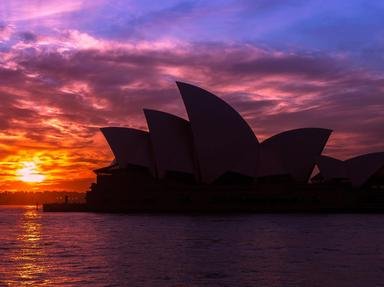Quiz Answer Key and Fun Facts
1. In 1616, Dirk Hartog landed on an island that now bears his name. He had bumped into a rather barren part of the Western Australian coast. What simple item did he leave behind?
2. Western Australia saw several European visits, mainly because of the proximity to the Spice Islands (now part of Indonesia). An Englishman named Dampier navigated around the top of the Great South Land (or Terra Australis), taking floral and faunal specimens before heading north. He has a town named after him in Western Australia, and there is also a bay named after his ship. What bay is it?
3. James Cook is an indelible part of Australian history. Which parts of the 'great south land' did he discover and map?
4. 1813 was an important year in Australian history. The Blue Mountains, just to the west of the settlement at Sydney, were finally crossed. Blaxland, Wentworth and Lawson found the secret where previous attempts had failed. What did they do differently?
5. After the barrier of the Blue Mountains was overcome in 1813, explorers went in all directions. Hamilton Hume and William Hovell crossed and named this major river, and Charles Sturt followed it to its mouth. What is that river known as today?
6. Master sailor Matthew Flinders explored a lot of Australia, and his legacy is remembered all over the country with towns, streets, etc, all named after him. What did his 1798 expedition prove?
7. After the coastal fringes of Australia had been explored, attention turned to the interior of the country. In the first half of the nineteenth century, what legendary geographical feature were many expeditions looking for?
8. In 1835, John Batman declared that 'This will be the place for a village'. His 'village' got quite a bit larger over the years. What name is it known by now?
9. Major Thomas Mitchell was another explorer than travelled extensively, mainly in the eastern half of the continent. He surveyed the Darling River, a major tributary of the Murray, and explored inland Queensland. He is remembered by various place names, and also an animal. What type of animal is known as a Major Mitchell?
10. Australia has a few famous trees in its history, but which is most closely associated with the disaster that was the 1860 Burke and Wills expedition?
Source: Author
ozzz2002
This quiz was reviewed by FunTrivia editor
bloomsby before going online.
Any errors found in FunTrivia content are routinely corrected through our feedback system.
